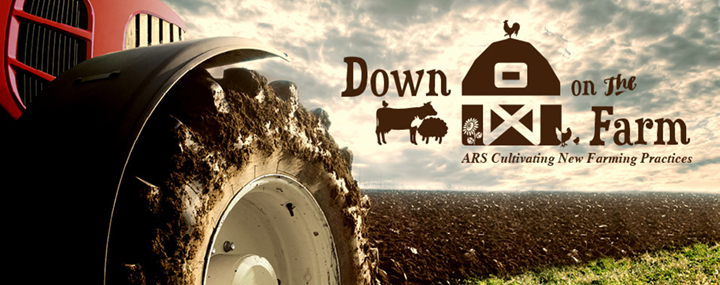
Researchers Plan To Use Satellites To Improve Sustainability, Yield
Two of the nation's great agricultural regions are the focus of new research that aims to head off emerging threats and improve sustainability.
Scientists with the Agricultural Research Service (ARS) are joining colleagues to create and use artificial intelligence to help farmers in the Colorado River Basin and Salinas Valley, CA, improve their management of irrigation, fertilization, and pests. USDA's National Institute of Food and Agriculture funded the University of California, Riverside-led project with a 5-year, $10 million grant.
"This project will integrate multiple satellite and meteorological data sets to help farmers in the Southwestern United States," said Ray Anderson, a research soil scientist with the ARS Agricultural Water Efficiency and Salinity Research Unit in Riverside. Anderson leads the ARS portion of the study, working with ARS scientists Todd Skaggs and Andrew French.
ARS has three primary roles in the project: To calculate project area crop water use and anomalies with crop water use across the entire region; develop tools that help growers avoid salinity damage while minimizing the leaching of fertilizer; and to gather field data to validate satellite algorithms.
Researchers will take advantage of advanced satellite technology to provide more frequent, detailed information to farmers than ever before. The plan is to integrate high-resolution commercial satellite data with established government satellite platforms and meteorological data.
A major advance with this work will be the use of daily, high-resolution (12-foot) satellite imagery, Anderson said. Previously, data have only been available every 1-2 weeks at 60- to 100-foot resolution and were too infrequent or coarse to provide timely and actionable information to farmers.
 Artist's rendition of the Landsat 8 Data Continuity Mission satellite, which launched Feb. 11 2013. This satellite provides thermal infrared images at the high spatial resolutions critical for many agricultural applications. (Image by NASA)
Artist's rendition of the Landsat 8 Data Continuity Mission satellite, which launched Feb. 11 2013. This satellite provides thermal infrared images at the high spatial resolutions critical for many agricultural applications. (Image by NASA)
"By combining the new satellite data with artificial intelligence, we will be able to discover and create tools that will help farmers pinpoint areas that need better irrigation, nutrient, and pest management," Anderson said.
"One of the major advantages to this project is that the outputs – recommendations and highlights on a smartphone app – will be accessible to all farmers," he said. "Previously, farmers had to pay for aircraft and specialized processing to get this level of imagery and detail. Soon, high resolution satellite imagery, machine learning, and cloud processing will be available to smaller producers in one easy-to-use tool. These algorithms will help farmers with their field scouting so that they can catch problems early, before significant yield reductions occur."
Agriculture in the Colorado River Basin and Salinas Valley employs more than 500,000 people and generates roughly $12 billion annually in revenue. Farmers in the regions grow fruits and vegetables that are shipped around the country all year round, particularly in winter.
Water availability and use top the researchers' priority list because prolonged drought has reduced agricultural water availability in the southwestern United States.
"These valleys consume large amounts of irrigation water, but the amount and quality of irrigation water is decreasing," Anderson said. "It is important to use existing supplies more efficiently and to protect water sources from nutrient and salinity contamination that can come from poor irrigation management." — By Scott Elliott, ARS Office of Communications.
